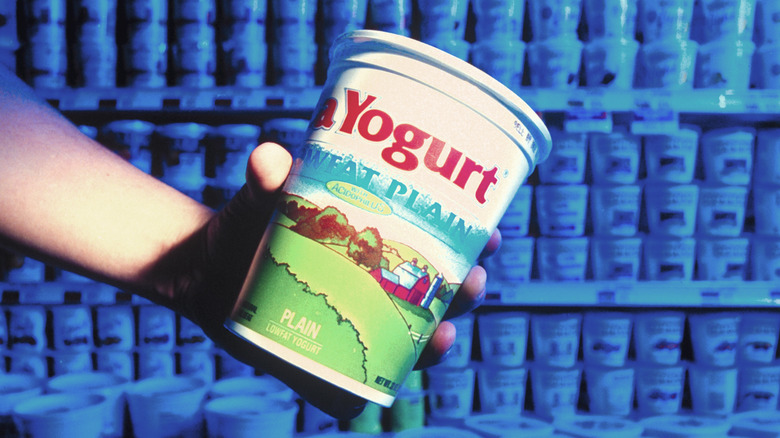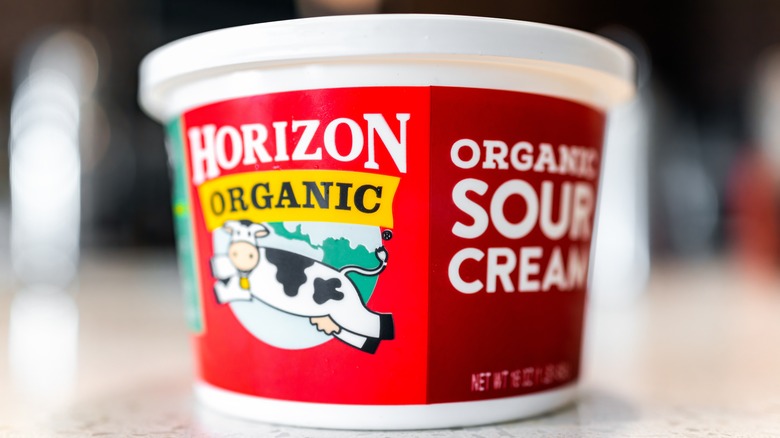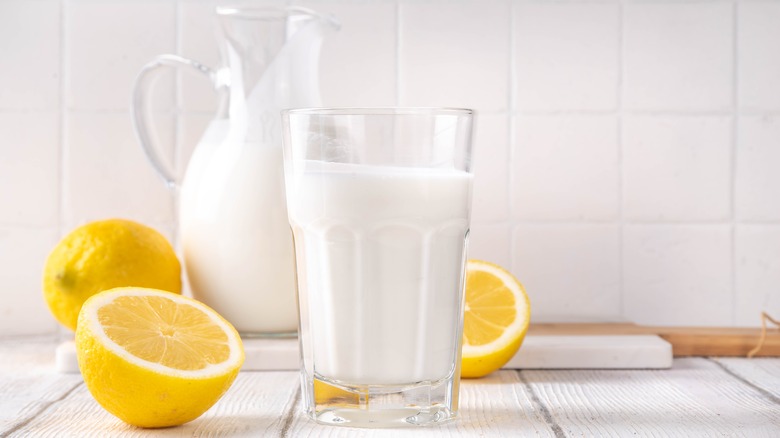2 Easy Ingredient Swaps For Yogurt In A Recipe
Yogurt should be a pantry staple for home cooks, but sometimes, you're just caught short in the middle of a recipe. Don't fret: There are a couple of pretty easy substitutes you can make. However, before getting to those, be sure to think about the role of yogurt in your dish when choosing a substitute.
Generally speaking, yogurt in a recipe — whether sweet or savory — is used to add both texture and flavor. Texturally, it's smooth and creamy (but won't water things down as much as something viscous, like cream). In terms of flavor, it adds a light tanginess and acidity that won't be so easily matched by (often fattier) dairy products, but which can be approximated by, say, adding something like cream and then some acid like lemon juice.
If you're baking with yogurt, it plays some other roles in your recipe: If you're using baking soda, the acid in yogurt can also react with it, making yogurt a leavening agent to help your baked goods rise. It can also be useful for adding moisture to a recipe: This is probably more relevant for baked goods, but theoretically, a savory yogurt dipping sauce also adds moisture to a dish, in a way. Yogurt can act as a binding agent of sorts, but this is probably less important, since most baked goods will have an ingredient like eggs to do this. In any case, the best substitutes for yogurt will check as many of these boxes as possible.
Yogurt substitute option number one: Sour cream
Excluding the most obvious substitute for plain yogurt — a one-for-one swap with Greek yogurt, which is slightly thicker and has more protein — arguably the best option is to go with sour cream. You can generally do a one-for-one swap, using the same amount of sour cream as you would yogurt.
In terms of texture and flavor, sour cream is about the closest you can get: It's both creamy and tangy, in a way that's much closer to yogurt than other thicker dairy products such as cream cheese or cottage cheese. Bear in mind that yogurt can be a little tangier than sour cream, but it's not drastically different. For baking, sour cream is also fairly acidic, so it should work as a leavening agent if needed, and it'll add moisture, too.
You'll want to pay attention to the fat content, though. Sour cream is generally fattier than yogurt — by FDA rules, it should be above 18% butterfat. Yogurt will be a bit lower: It can go to 10% fat but is often closer to 3-6%. (Of course, there's also no-fat yogurt, but this isn't great for cooking and especially not for baking.) So, you may want to make slight reductions in other fatty ingredients if you're using sour cream.
Yogurt substitute option number two: Buttermilk
Another yogurt substitute that can work — although only in certain situations — is buttermilk. This swap is mostly useful when you're baking. While it does bring a tangy taste to a recipe, it's far less thick, so it would be too watery to use for a dipping sauce or in a savory recipe like a curry where it might thin out the dish too much. However, buttermilk does contain the all-important acidity that's necessary for leavening, and it has a fat content around 3%, relatively close to yogurt. It will add moisture, of course, but the risk here is adding too much.
Instead of doing a one-to-one swap, it's probably worth cutting the volume down by ¼. So, if a recipe needs a cup of yogurt, use ¾ of a cup of buttermilk. Adding more flour is also a way to balance out the moisture in this kind of situation. Finally, if you're really stuck, you can even make your own buttermilk at home — all you need is milk (whole milk is best) and an acid like lemon juice or vinegar: The normal ratio is a tablespoon of acid to each cup of milk.


